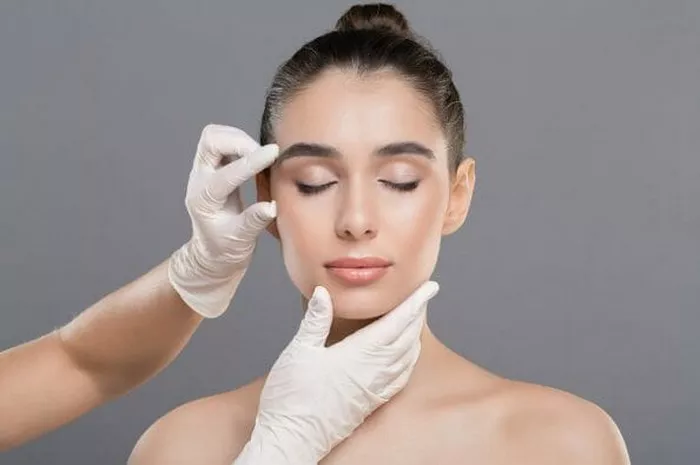Rhinoplasty, also known as a nose job, is a popular cosmetic surgery that can help improve the appearance and function of the nose. After rhinoplasty, it is important to follow certain guidelines to ensure proper healing and optimal results. One of the most important guidelines is to sleep on your back after rhinoplasty. In this article, we will explore why sleeping on your back is important after rhinoplasty, how long you should sleep on your back, and tips for sleeping comfortably.
Why Sleep on Back After Rhinoplasty?
Sleeping on your back after rhinoplasty is important for several reasons. First, it helps to reduce swelling and bruising. When you sleep on your side or stomach, blood flow to your nose is increased, which can cause more swelling and bruising. By sleeping on your back, you can help to reduce the amount of blood flow to your nose and minimize swelling and bruising.
Second, sleeping on your back helps to protect your nose. After rhinoplasty, your nose is delicate and vulnerable to injury. Sleeping on your back helps to prevent accidental bumps or pressure on your nose while you sleep, which can cause damage to the surgical site and delay healing.
Finally, sleeping on your back helps to promote proper healing. When you sleep on your back, your head is elevated, which can help to reduce congestion and promote proper drainage. This can help to prevent complications such as infection or breathing difficulties.
How Long to Sleep on Back After Rhinoplasty?
The length of time you should sleep on your back after rhinoplasty can vary depending on your individual situation. In general, most surgeons recommend sleeping on your back for at least 1-2 weeks after rhinoplasty.
During this time, it is important to avoid sleeping on your side or stomach, as this can increase swelling and bruising and put pressure on your nose. Your surgeon may also recommend using a special pillow or wedge to help keep your head elevated while you sleep.
After the first 1-2 weeks, you may be able to gradually transition to sleeping on your side or stomach, depending on your surgeon’s recommendations. However, it is important to continue to avoid putting pressure on your nose and to use caution when sleeping in any position other than on your back.
Tips for Sleeping Comfortably on Your Back
Sleeping on your back can be challenging, especially if you are used to sleeping on your side or stomach. Here are some tips to help you sleep comfortably on your back after rhinoplasty:
Use a Wedge Pillow
A wedge pillow can help to keep your head elevated while you sleep, which can reduce swelling and promote proper healing. You can purchase a wedge pillow online or at a medical supply store.
Use a Neck Pillow
A neck pillow can help to support your neck and prevent stiffness or discomfort while you sleep. Look for a pillow that is designed specifically for back sleepers.
Use a Soft Pillow
After rhinoplasty, your nose will be sensitive and delicate. To prevent discomfort, use a soft, comfortable pillow that won’t put pressure on your nose.
Keep Your Bedroom Cool
A cool bedroom can help to reduce swelling and promote proper healing. Keep your bedroom at a comfortable temperature and use a fan or air conditioning if necessary.
Avoid Alcohol and Caffeine
Alcohol and caffeine can interfere with sleep and increase swelling and bruising. Avoid consuming these substances before bedtime.
Practice Relaxation Techniques
Relaxation techniques such as deep breathing or meditation can help to promote relaxation and reduce stress, making it easier to fall asleep on your back.
Use Aromatherapy
Aromatherapy can be a helpful tool for promoting relaxation and improving sleep quality. Essential oils such as lavender, chamomile, and ylang-ylang can help to promote relaxation and reduce stress.
Wear Comfortable Clothing
Wearing comfortable clothing can help to prevent discomfort while you sleep. Choose loose-fitting, breathable clothing that won’t put pressure on your nose or interfere with your ability to breathe comfortably.
Elevate Your Legs
Elevating your legs can help to improve circulation and reduce swelling in your legs and feet. This can help to promote overall comfort and make it easier to sleep on your back.
Follow Your Surgeon’s Recommendations
Finally, it is important to follow your surgeon’s recommendations for sleeping after rhinoplasty. Your surgeon may have specific instructions or recommendations based on your individual situation, and following these guidelines can help to ensure proper healing and optimal results.
Conclusion
Sleeping on your back after rhinoplasty is an important part of the healing process. It can help to reduce swelling and bruising, protect your nose, and promote proper healing. While it can be challenging to sleep on your back, especially if you are used to sleeping on your side or stomach, there are several tips and tricks that can help you sleep comfortably. By following your surgeon’s recommendations and taking steps to promote proper healing, you can achieve optimal results from your rhinoplasty surgery.

